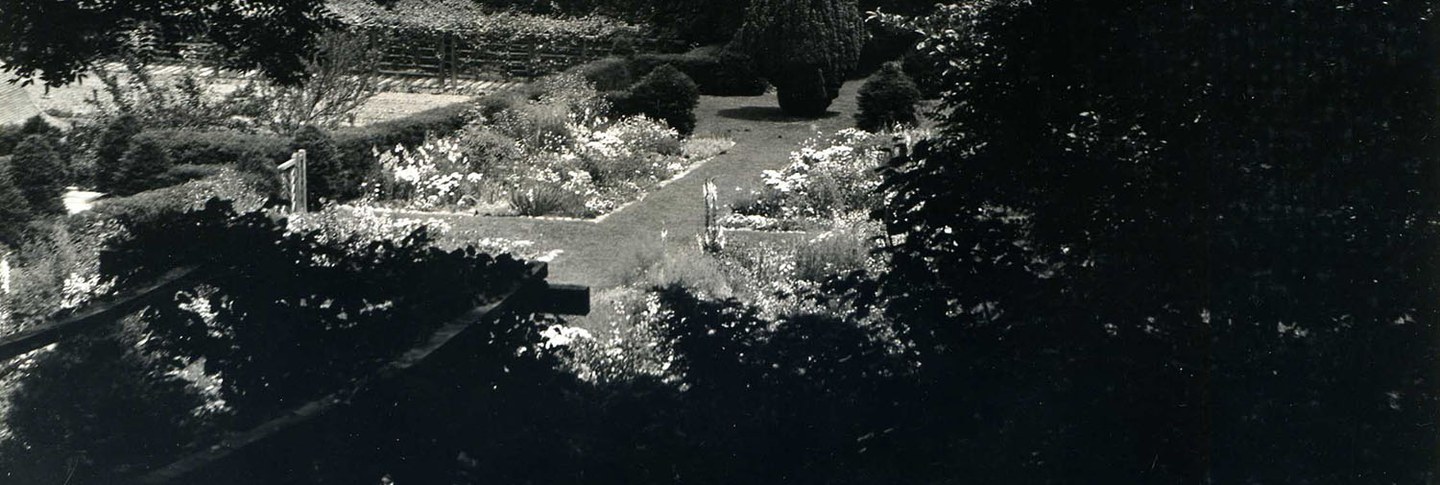The plantings in the Herbaceous Border include two yews installed by Beatrix Farrand in 1929. Standing at the east and west end of the border, they were named Mr. and Mrs. Yew (Mr. Yew lies at the eastern end while Mrs. Yew is in the west). Between the yews on the slope, the Herbaceous Border provides an aisle of mown grass bounded by the vibrant colors of the planting beds. The four Elizabethan benches surrounding Mr. Yew, each hiding in its own corner of hedge, appear as though the space was designed around them, rather than the other way round—an excellent example of Farrand’s comprehensive design approach to the Dumbarton Oaks Gardens.
In winter, the parallel 100-foot-long beds lie largely dormant with over 3,500 tulip bulbs in the cool soil. With violas planted in an undulating pattern around existing plantings that have been cut back, the spring brings a multihued bloom with plantings of differing height and magnitude. The pathway bisecting the border forms an intersection providing access up to Fountain Terrace with a “hotter” palette of flower colors, and down Plum Walk between the Kitchen Gardens and Cutting Garden, as well to both focal points of the room, Mr. and Mrs. Yew.



